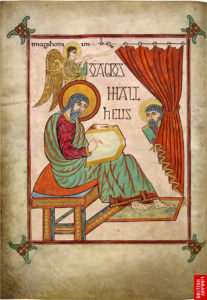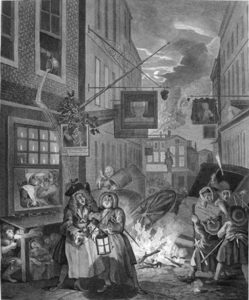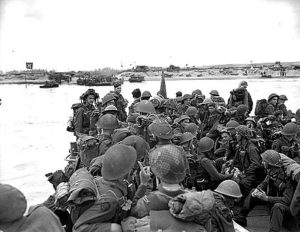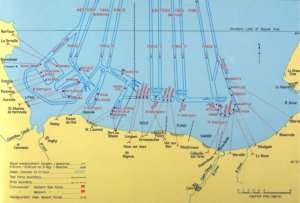Canada’s founding fathers (o, the patriarchy!) at the 1864 Charlottetown Conference. Remember: diversity is our strength.
Happy Dominion Day!
Canada: We’re Stranger Than We Know
Japan Bombs Canada
I learned years ago that in World War II the Japanese Empire had attempted to bomb the American west coast with balloons intended to cause forest fires. I even knew that these devices had actually killed some Americans.
What I did not know was that these bombs also hit Canada and landed as far inland as Manitoba.
Read all about it here, 74 years after the incendiary campaign:
http://www.amusingplanet.com/2018/05/the-japanese-balloon-bombs-of-world-war.html
June 8
793
Vikings attack the monastery at Lindisfarne
Off the eastern coast of Northumbria is the island of Lindisfarne. In the 600s Celtic monks established a priory there which became a centre of Christian learning and evangelism in Anglo-Saxon England. Its calligraphers and illuminators produced one of the ornaments of civilization, the Lindisfarne Gospels, (See the title page of the Book of Matthew below.)
In 793 the island saw the first ever Viking attack on the British Isles. According to the Anglo-Saxon Chronicle:
In this year fierce, foreboding omens came over the land of the Northumbrians, and the wretched people shook; there were excessive whirlwinds, lightning, and fiery dragons were seen flying in the sky. These signs were followed by great famine, and a little after those, that same year on [June 8th], the ravaging of wretched heathen people destroyed God’s church at Lindisfarne.
The ease with which the raid on Lindisfarne had yielded slaves and loot soon spread through Scandinavia and prompted centuries of Viking incursions across Europe. Possessed of the remarkable technology of the longboat, a craft which enabled them to penetrate foreign countries through river systems or challenge the North Atlantic, raiders from Denmark, Norway and Sweden soon appeared everywhere from the Black Sea to the coast of Newfoundland. They raped, looted and pillaged wherever they could or traded when they encountered superior forces. They destroyed kingdoms, established new cities like Dublin, and created new states like Normandy, Norman England, Sicily, or the Duchy of Apuleia. Though Christianity helped to bring an end to the Viking Age, the creative destruction of these northern barbarians was a great engine of change in medieval Europe.
June 6
1712
The Mohocks
Eighteenth-century London, poorly-policed and crime-ridden was the playground for various gangs of aristocratic vandals, one of the most notorious calling themselves “The Mohocks”. This account describes their comeuppance.
On the 6th of June 1712, Sir Mark Cole and three other gentlemen were tried at the Old Bailey courthouse in London for riot, assault, and beating the watch. A paper of the day asserts that these were ‘Mohocks, that they had attacked the watch in Devereux Street, slit two persons’ noses, cut a woman in the arm with a penknife so as to disable her for life, rolled a woman in a tub down Snow Hill, misused other women in a barbarous manner by setting them on their heads, and overset several coaches and chairs with short clubs, loaded with lead at both ends, expressly made for the purpose. In their defence, the prisoners denied that they were Mohocks, alleging that they were ‘Scourers,’ and had gone out, with a magistrate’s sanction, to scour the streets, arrest Mohocks and other offenders, and deliver them up to justice.
On the night in question they had attacked a notorious gambling-house, and taken thirteen men out of it. While engaged in this meritorious manner, they learned that the Mohocks were in Devereux Street, and on proceeding thither found three men desperately wounded, lying on the ground; they were then attacked by the watch, and felt bound to defend themselves. As an instance of the gross misconduct of the watch, it was further alleged that they, the watch, had on the same, night actually presumed to arrest a peer of the realm, Lord Hitchinbroke, and had latterly adopted the practice of going their rounds by night accompanied by savage dogs. The jury, however, in spite of this defence, returned a verdict of ‘ guilty;’ and the judge fined the culprits in the sum of three shillings and four-pence each.
1944
D-Day
By 1944 German forces were being pushed back on the Eastern Front and in Italy, but everyone knew that the Allies were preparing an invasion of continental Europe from bases in England. The Germans had constructed the massive Western Wall stretching from Norway to Spain, trusting to its minefields, beach obstacles, gun emplacements, and concrete bunkers to pin any invaders on the beach and deter any progress inland. The Allies relied on deception and air superiority to keep the enemy from knowing where their blow would be struck and from moving in reinforcements.
On the morning of June 6, over 20,000 Canadian, British, and American paratroopers were dropped over the Normandy peninsula to take control of bridges and roads behind the landing zones. A thousand warships then bombarded defenders along a fifty-mile stretch of the coast, and units of the French Resistance were activated on missions of sabotage. Almost 7,000 vessels from 8 Allied navies, from battleships to landing craft converged on 5 beaches, codenamed Utah and Omaha (the objectives of American forces) and Sword, Juno, and Gold (targets of Canadian and British armies).
Casualties were heavy, particularly in the American sector, and none of the initial objectives were reached on the first day but a successful toehold in France had been achieved and would provide the beachhead for the armies that would soon sweep the Germans out of France.
Hitler at Vimy Ridge
What do you do with the graves and memorials of your enemies? That is a question that has faced conquerors for thousands of years.
When Alexander the Great had captured Thebes in 338 BC, he murdered all the males, sold the women into slavery, and ordered the city razed to the ground — with the exception of one house. The home he ordered spared was that of the dead poet Pindar, a favourite of Alexander who liked the fact that Pindar had spoken well of Macedonians.
When a Roman emperor had been overthrown by his rivals, his works and statues were obliterated in what they called a damnatio memoriae. A similar fate has now overtaken Canadian politicians like John A Macdonald, Egerton Ryerson, or Lord Cornwallis, who in their time were not nice enough to aboriginals in the eyes of 21st-century critics.
In 1547, when the Catholic emperor Charles V had taken the town of Wittenberg where Martin Luther was buried, he was asked whether he wanted the arch-heretic’s grave dug up and his remains burnt or hung from a gallows. Much to his credit, Charles replied, “I make war on the living, not on the dead.” Luther’s resting place was left undisturbed.
A similar attitude seems to have been held by Adolf Hitler in 1940. Hitler had been a soldier in the German army during World War I and had suffered in the trenches, ending the war in a military hospital recovering from a poisonous gas attack he endured at the Ypres salient in Belgium. What would he do then when he returned to that site as a conqueror 22 years later and found an enormous Canadian war memorial (picture above)?
Unlike many other Allied graves from the Great War, the Canadian monument at Vimy Ridge was not vandalized by the Nazis. Apparently, Hitler appreciated the fact that our memorial was not glorifying war but mourning our dead. He ordered an SS guard mounted at the site and protected the monument from any damage.
Bulgarian Magi and Herod
This is another page from the set of gospels made in the 1350s for the Bulgarian tsar Ivan Alexander. Here, at the top, the wicked King Herod consults his advisers as to the location of the “King of the Jews” whom the Magi have come to worship. At the bottom, the Wise Men are told to seek the child in Bethlehem and then return to report to Herod.
Bulgarian Magi
As the handful of loyal readers of this blog will know, I am a sucker for medieval illuminated manuscripts. The illustration below is from a mid-14th century set of gospels made for the Bulgarian tsar Ivan.
Note that the treatment of the figures in many ways imitates Byzantine ideas of the Nativity. You will see on the bottom left a disconsolate and bewildered Joseph sitting apart, to indicate that he is not the true father of Jesus. In the centre bottom is the midwife bathing the baby. Mary is depicted reclining while ox and ass look on; and the Magi are seen coming on the left and departing on the right. Note that the Wise Men represent the three ages of man: a beardless youth, a mature man with a black beard, and an elderly greybeard. An angel addresses two shepherds, one of whom seems to be holding a microphone.












